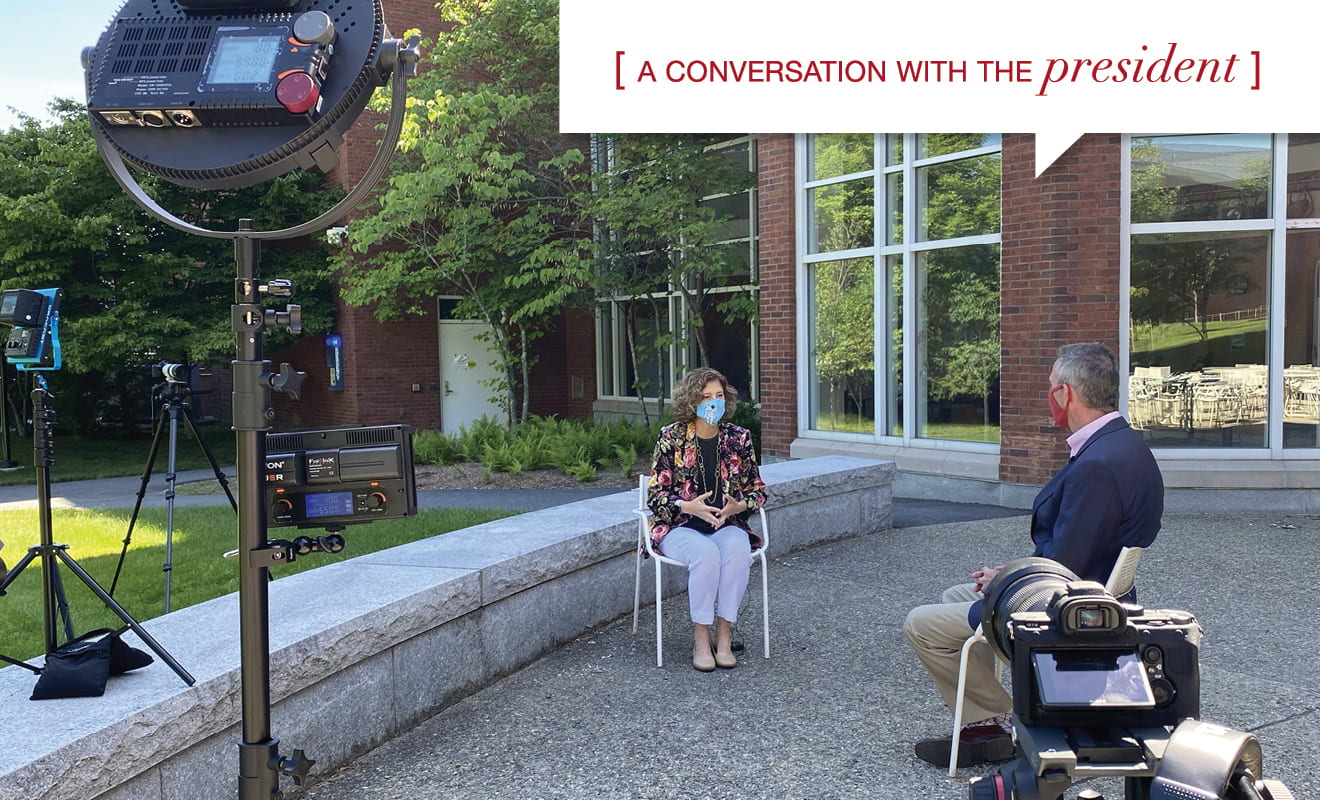Conversation with the President
Featuring Philip Clay, Vice President for Student Affairs
Laurie: Philip, It’s great to have you here. As one of the leads of the Coronavirus Emergency Response Team (CERT), you’ve been working night and day, getting our campus community ready to return for fall. Tell us a little bit about CERT and who’s involved.
Philip: CERT is a cross section of members of the university community representing not only academics, but health services, student life and activities, campus police, and more. A true cross section of the community has been working on this problem.
Laurie: There are more than 200 people across the campus who have been working on this and on the various sub-teams. Is that right?
Philip: Yes. Since the very beginning, we’ve reached each critical venture of decision-making for the university, bringing in experts—both internally and externally. As we’ve gone through this process, I can see how it really mirrors our WPI experience of theory and practice. Much like a student project, where you research, get new information, pivot, bring in experts—whether that’s an epidemiologist or a team to look at our physical campus set-up and cleaning products … how do we get the appropriate supply of PPE to be able to function.
Laurie: On July 1st we announced our intent to bring people back to the campus. What are we hearing from folks about what their concerns are—and are we confident we’re addressing them?
Philip: We recognize that there are members of our community who are in a high-risk category, or may be living with someone who’s high risk. Therefore, many of our core plans are focused on the appropriate steps we need to take to ensure safety, which is why we’re approaching the reopening with a blended approach. For the educational delivery, we have a remote option … so if someone who feels, for whatever reason, that they cannot come to campus, they can access their education remotely. We’ve learned over the course of the summer that even with clubs and organizations, we can pivot and figure out how to do that safely and remotely.
Laurie: Again, I’m so impressed with CERT because it has left no stone unturned. The last thing … we’ve recently signed on with the Broad Institute to conduct testing on campus. People should feel confident that when we have a case [of someone with COVID-19], we’ll find them quickly and isolate them. Talk a little bit more about the level of safety provided by testing.
Philip: We have taken a very aggressive approach in terms of our testing, because with asymptomatic spreading, it’s important to be able to identify as quickly as possible. By testing regularly, we’re able to implement our plans for both isolation and quarantine based on that individual, but also within the circles of people that individual has come in contact with. We can then identify those people, separate, and support them with regular check-ins and healthcare, and also bring them meals, make sure they have what they need to continue classes while recovering—all so they can rejoin campus life as quickly as possible.
Laurie: It’s all about those safety protocols, such as always wearing your face coverings! I’m really confident we can keep each other safe if we’re willing to just do simple things like this. I am so glad that CERT has been doing such an amazing job planning and I’m looking forward to welcoming our students back. Thank you for all you’re doing.
Philip: Absolutely … my pleasure.



